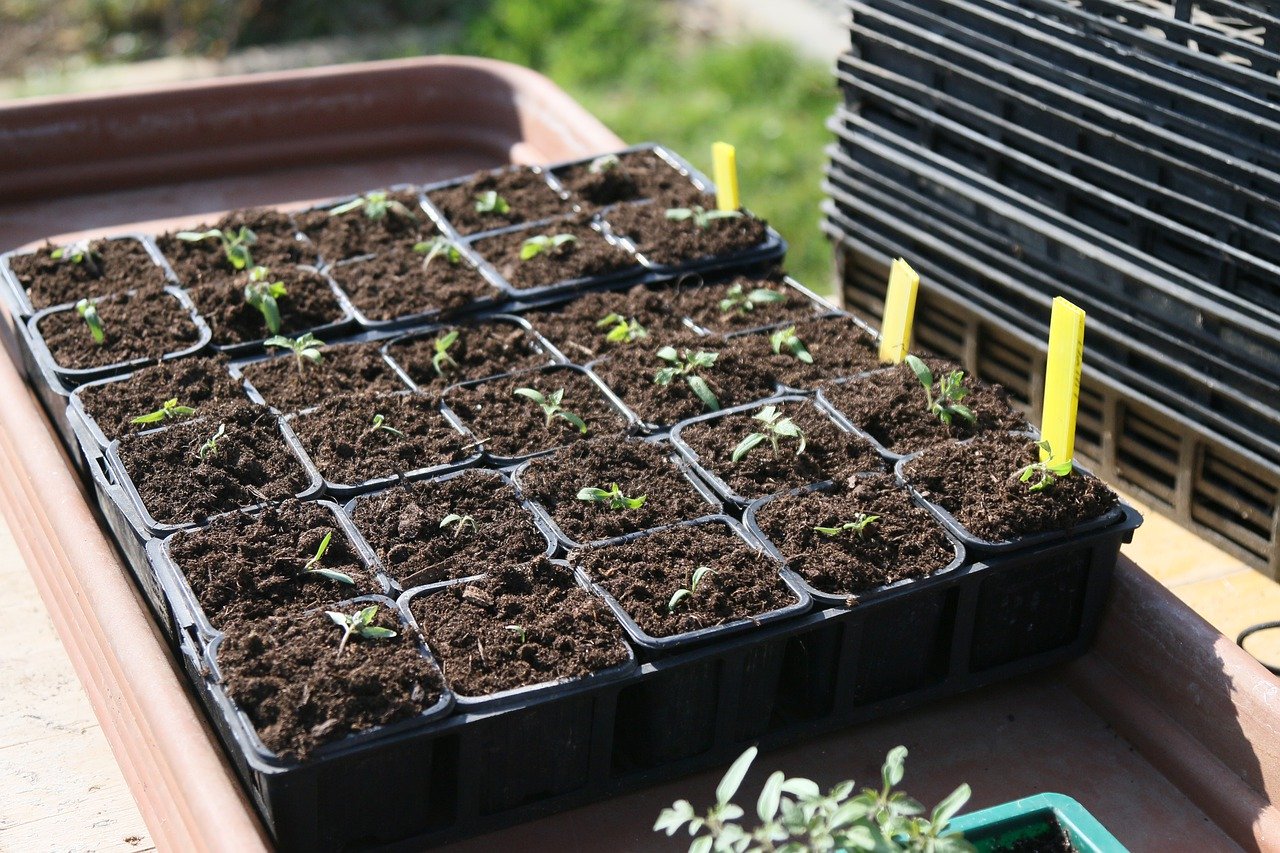Knowing when to transplant basil seedlings is the next step you need to make once the delicate seedlings that you planted in nutrient-rich soil have already grown. This aromatic herb that adds flavor to spaghetti sauces, soups, salads, stew, and chicken dressing, is extremely easy to grow because it doesn’t require a lot of maintenance.
Basin seeds are considered an annual plant because the period of growth from seed to harvest can take approximately 4 to 6 weeks. This makes it a perfect choice for gardening enthusiasts who are still at the stage of exploring and learning the art of gardening. Since basil is a versatile plant, it can be grown both outdoors and indoors.

When Should I Transplant my Basil Seedlings?
Even if basil is easy to care for and versatile in different environments, it’s still as fragile as other plants when it comes to transplantation. Before deciding on transplanting your basil, you have to assess if they’re strong enough to handle the stresses of being transplanted. While most of the instructions on the internet say that the best time to transplant basil is 5 to 6 weeks after planting the seedlings, some indicators can tell you that your basil seedlings are ready for transplantation.
Here are some of the things to look out for to know that your basil seedlings are ready to be transferred to its permanent home:
Transplant basil when they have grown “true leaves”
What are true leaves and how do you know that your basil seedlings have grown one? After a few days after planting your basil seed, seed leaves will sprout from the cotyledons of the seedlings. Once the root establishes itself in the soil, only then will the second set of leaves or the “true leaves” emerge.
From the point where the seed starts sprouting to the emergence of the first true leaves, basil plants don’t actually need sunlight. During this time, the main things that supply the nutrients to them are the cotyledons and the soil. For this reason, make sure that you transplant the seedlings once you see their true leaves grow.
When they’re at least 3 inches tall
One of the signs that your basil seed is ready for transplantation is when it reaches a height of 3 inches. However, you shouldn’t rely entirely on the height of your plant before deciding that it’s ready for transplantation. It should also have at least two sets of true leaves before you transfer it to another area to grow.
Other things to look out for…
Aside from the height and true leaves, you should also check for overcrowding in your planter. You may have initially thought that your basil seeds had plenty of room to grow when you started to plant them. However, if you were using a small pot, it would only be a matter of time before the seeds compete for the nutrients that are available and their roots start to grow out of the bottom of the pot.
If they’re overcrowding and you spot their true leaves, don’t waste your time debating within yourself if you should transplant them or not. Prepare your basils for transplantation right away.
Why You Should Use a Mini Greenhouse to Grow Your Plants
Mini Greenhouses are great resources for both beginner and expert gardeners. It will give you a good space to store your plants when the weather gets too extreme for them to survive on. Greenhouses also provide you with a chance to protect your fragile plants from pests and diseases.
Here are the other benefits of having a mini greenhouse to grow and store your favorite herbs in:
Extended growing season
One of the biggest advantages of mini greenhouses is its ability to provide gardeners with an extended growing season. Exposure to increasing and fluctuating environmental temperatures could put many types of plants at risk for dying. However, with a mini greenhouse, you’ll be able to provide them with an optimal environment that will help them live longer and extending their growing season.
You can grow a wider variety of plants
Being that the mini greenhouse provides your plants with a controlled growing environment, it makes it the perfect place for plants of any type to grow. If you want to grow a warm-season plant in the fall or winter, you can do so with the help of a mini greenhouse. You’ll have full control of the environment so you can make sure that your plants will grow successfully no matter the climate.
Grow plants without pesticides
Since mini-greenhouses also provide a pest and disease-free environment for your plants, you won’t have to use many pesticides to control any infestations. This way, you can reduce or eliminate toxic substances that you spray in your plants, ensuring that you and your family can enjoy organic and pesticide-free fruits and vegetables.
When to Transplant Basil Seedlings: Conclusion
The plant’s growth rate depends on the abundance of nutrients that they receive every day. When it comes to transplanting basil seeds, you need to keep an eye out for the signs that they’re ready for transplantation – the growth of their true leaves and when they’ve grown at least 3 inches in terms of height.
Now that you know when to transplant basil seedlings, it’s time to put your knowledge into action. Follow the advice above to make sure that your basil seedlings will survive and last a long time. For best results, plant them in a mini greenhouse!
